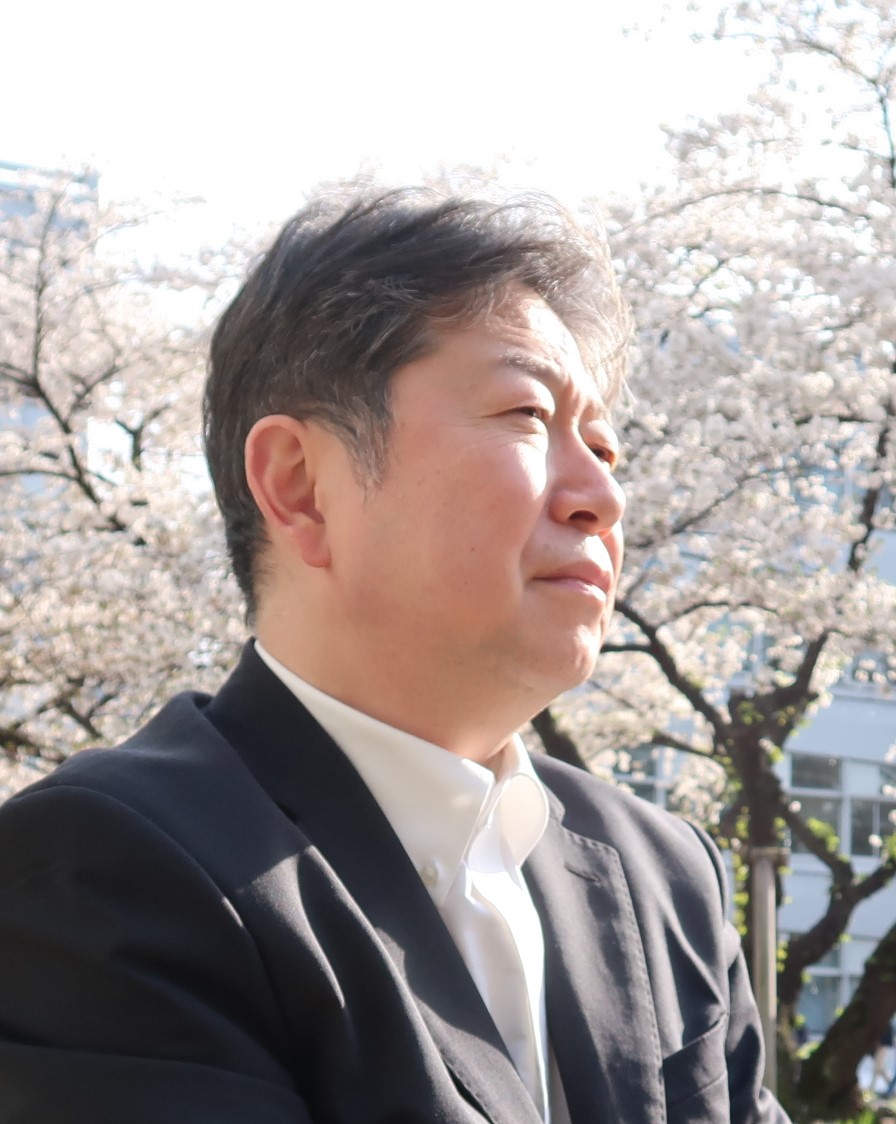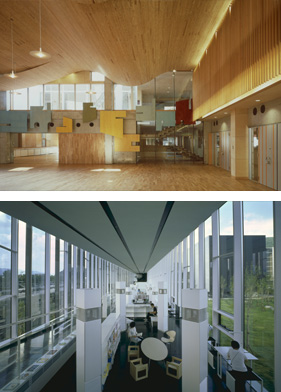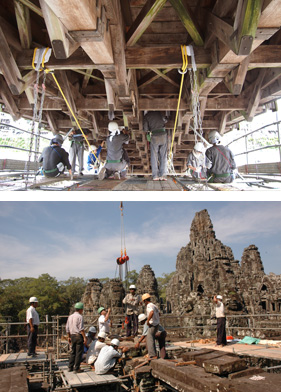Waseda University was established in 1882 and will celebrate its 150th anniversary in 2032. The Department of Architecture began offering preparatory courses in 1909, 27 years after the university was founded, and the undergraduate program in architecture was launched in 1910. As a private university, it has the longest history of any architecture department in Japan, with over 110 years of experience. During this time, it has produced many talented individuals both in Japan and overseas. And it has contributed to the development of the architecture world.
As times change, so do the roles that universities and architecture departments should play. In today’s increasingly complex society, there is a need for the ability to respond to issues such as “diversity”, “internationality”, “DX (digital transformation)”, “decarbonization”, “sustainability” and “environmental awareness”. To solve these issues, “comprehensive knowledge” is becoming increasingly important. Comprehensive knowledge” refers to the gathering of diverse ‘knowledge’ to create new value and ‘knowledge vitality’. Architecture is a discipline that combines the humanities (art, history, planning, etc.) and engineering (structure, equipment, environment, materials, construction, etc.), so it is one of the disciplines that is closest to the application of “comprehensive knowledge”. The architecture department at Waseda University has an educational program that basically allows students to study a wide range of subjects, from humanities subjects to engineering subjects, over a six-year period that includes both undergraduate and graduate school. For this reason, we have invited researchers and practitioners who are active on the front lines of the architecture world to join our teaching staff, and we are not only teaching the design and construction of individual buildings as in the past, but also fostering awareness of issues and the ability to solve problems related to community resilience, urban environments, and the global environment.
The students who enroll in the architecture department are also diverse. In addition to the general entrance exam, we also select students from a variety of backgrounds for the AO entrance exam, designated school recommendation entrance exam, affiliated school recommendation entrance exam, and bachelor’s degree transfer entrance exam. We hope that students with such diverse values will work hard together and use this as an opportunity for their own growth. The graduate school has an English degree program, and there are many international students enrolled. In addition, many students use the exchange program with overseas universities with which we have concluded agreements, and it can be said that the Department of Architecture is characterized by its active international exchange.
The alumni association, which was established in 1909 along with the architecture department preparatory course, is also an indispensable partner for the architecture department. By supporting current students, the alumni association makes it possible to provide a top-level educational environment in Japan.
Architecture has always been an essential part of people’s lives. Let’s think about the future of architecture together.

Dean of the Department of Architecture (September, 2024 ~ )
Professor Dr. Yasuhiro HAYABEOverview of our department
The Department of Architecture at
Waseda University has a longest history as a private university
architecture department and has graduated many excellent experts in
the architecture-related fields. As a result, it enjoys a great reputation
inside and outside Japan. The discipline of architecture is divided into
the fields of architectural art and architectural engineering, with the
former consisting of architectural history, architectural design, and
urban planning, and the latter consisting of environmental engineering,
architectural structure, and materials and construction management. It is
the department’s ideal that the research and education components in each
area of study can be largely integrated in architectural practice and theory.
The curriculum includes not only analytical studies but also design
work. It is characterized by the comprehensive learning of architectural
design in a wider sense of the term ranging from basic design to
engineering. With design and planning as its core, together with
relevant lectures and exercises, architecture is comprehended by
integrating a wide range of knowledge. Since 2007, it has been
compliant with the Japan Accreditation Board for Engineering Education
(JABEE) as well as international accreditation standards.
In the Graduate School of Architecture, the field of architectural art
consists of architectural history, which provides historical examination
of the theory of architectural changes and creation, architectural design
and planning whose subject is contemporary creation in architecture
itself, and urban planning, which focuses on cities as a collection of
architecture. The field of architectural art includes new educational
contents that also correspond to the JABEE’s newly created accreditation
criteria for master’s degree programs.
The architectural engineering field has its own unique characters.
Environmental engineering deals with a method for planning comfortable
and healthy environments and building systems in buildings and
cities, the theorization of building disasters such as fires and floods
and the development of disaster prevention plans and technologies, as
well as energy efficient technologies and environmental solutions for
the realization of a decarbonized society. In addition, the students work
on the development and planning of software technologies for
environmental evaluation and consensus building technologies, etc. In
the study of architectural structure, a wide range of research and
development from basic architectural structure to application in
structural calculations is carried out, including structural materials,
earthquake-resistant structures, curved surface structures, ground and
basic engineering, structural control, seismic control (vibration)
structure, and so on. Construction management is directly linked to the
practice of construction management including the characteristics and
usage of new materials as new technological applications in the field
of building materials, the development of construction methods and
details corresponding to the purpose of each structural system, the
development of construction production systems and construction
management technologies, and so on.
The Waseda architecture has the feature of integrating the fields of
art and engineering in practice and has made many practical contributions
to academia.
Undergraduate school of Creative Science and Engineering
Department of Architecture
We have always believed that architecture is a practical science.
Our achievements are the result of an organic combination of
research and design. Many faculty members are active in design,
research, and education. Their studies in architectural design and
engineering have been based upon the rich history and culture of
Japan, which have led to copious creation of remarkable buildings.
Since the establishment of our department, many of our faculty
members have been practitioners. Their areas of interest cover both
architectural design and architectural engineering: architectural
design includes design of structural, mechanical/electrical systems,
and urban planning, while architectural engineering includes
environmental engineering, disaster mitigation, and building
construction methods. In addition, conservation of world heritage
has been one of the notable activities at Waseda. Our educational
programs are designed based upon the above-mentioned traditions
of the architecture department.
We have been offering a unique six-year curriculum integrating a
four-year undergraduate program and a two-year graduate program
since 2000. This six-year curriculum has two stages. The first
three-years are for studying the fundamentals of architecture; the
students are expected to acquire knowledge about architectural
histories of the world, the architectural and urban design in the
contemporary society, practical drawing and drafting techniques,
global environmental issues, technologies for urban infrastructure
and disaster preventions, structural engineering, and building
construction and management. In our design studios, the students
are encouraged to integrate such fundamental knowledge into their
own creative design proposals.
The following three years, from the fourth year of the undergraduate
program to the second year of the graduate program, is a stage
for the students to study their own specialized architectural topics.
The students select either an art or engineering focus and are
assigned to a laboratory suitable for their research interests. While
the graduate students conduct their own researches, they have
opportunities for being exposed to a wide variety of advanced topics
in architectural design and engineering through their daily communication
with the fellow students and faculties on campus. Our
program also offers to the graduate students practical training on
international communication skills, problem-solving methods, and
effective proposal techniques.
As mentioned above, we firmly believe that integrating the art
and engineering aspects of architecture is fundamental to “architectural
design” in a broader sense of the term. Hence, the
fourth-year students are required to complete both a research
thesis and a diploma design project for their bachelor’s degree.
Students who wish to continue to study in the graduate program
for an advanced degree widen their view of architectural design
and engineering through a master thesis or a diploma design
project while deepening their knowledge by highly specialized
studies at their laboratories.

Graduate school of Creative Science and Engineering
Department of Architecture
Approximately 70% of our undergraduate students go on to the
graduate school to pursue a master degree. Some of them
embark onto the doctoral program and become faculty members
in higher education, researchers at government institutions/private
laboratories after successfully completing the advanced program.
The graduate students are assigned to their laboratories based
upon their interests and conduct design and research activities
with their supervisors. The members of the laboratories are
diverse; students from Waseda and other universities, students
with professional background, foreign exchange students,
collaborators from the public and private sectors work together on
research and architectural design projects. Through the networking
of people and collaboration at the laboratories, the students
can be exposed to a real-world work environment.
The faculty members conduct researches in various fields;
architectural design, urban design, protection and repair of cultural
heritages, environment engineering, disaster prevention, sustainable
engineering, structural mechanisms, construction quality and
management, and many other subjects that respond to various
problems in our society. While the students hone their knowledge
and skills in their specialized areas by attending seminars, our
program also offers to the students many advanced lectures in
related fields and internship opportunities to integrate their
research topics in a larger academic and social context.
All graduate students are required to submit a final thesis or a
diploma design project for the completion of the master degree
program. Selected theses and diploma design projects will be
presented at international conferences and exhibitions.

English Based Graduate Program for Master
The Department of Architecture has
started an English based graduate program for Master’s since
2018. We open the door widely to international students and hope
to flourish and grow together in a globalized world. Each student
belongs to a supervisor’s laboratory. The students partake in
coursework and participate in projects in a real-world environment
with other members of the laboratory.
The students learn together with the Japanese students in the
laboratories, studios and classrooms.
We offer April and September admissions only to students who
have completed 16 years of standard school education outside
Japan, or those who are expected to complete such education.
